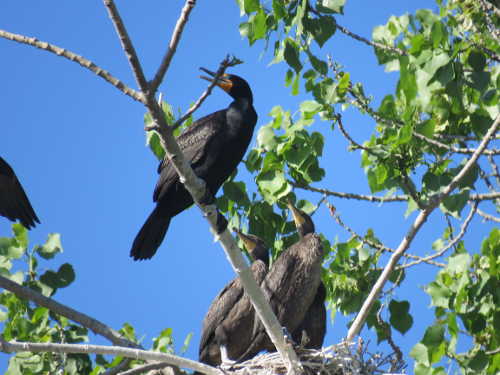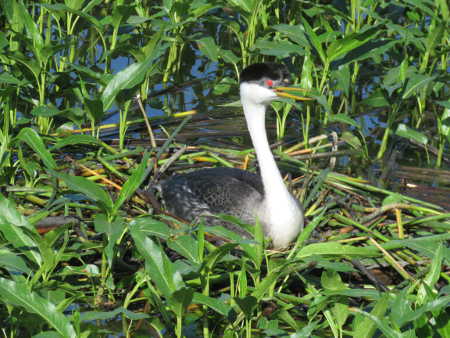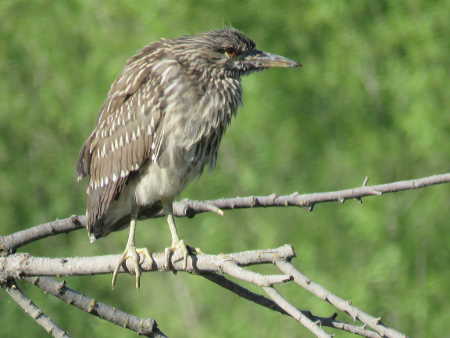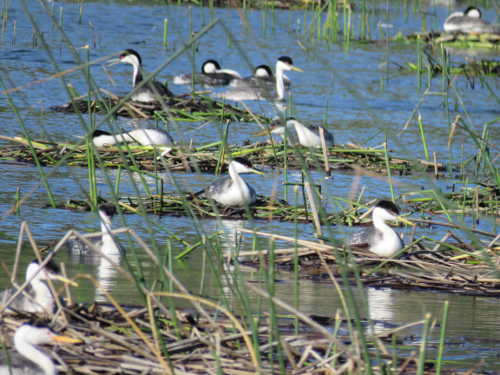
“What I am interested in with birds, just as I am with spiders or monkeys, is what they do and why they do it.” – David Attenborough
LAKE COUNTY, Calif. – Wilderness is one of the most prominent features of Lake County, and that's why we have an open invitation to view birds in all of their various habitats year round.
A walk in an oak woodland awakens one’s senses with the rat-a-tat sounds of woodpeckers in action, or you may discern an unforgettable hawk's cry.
Strolling a stony stream's bank you may sight industrious flycatchers and swifts. Listen for their distinct calls interspersed with the sonorous sounds of the stream as it bounds over rocks, or as the creek's clear and bright waters chortle purposefully along.
As Vincent Van Gogh said, “One can never study nature too much and too hard.”
We live in the Pacific Flyway – the north-to-south migratory path that draws birds – and birders to our fair county.

With more than 300 species of birds viewed on Clear Lake alone, and, according to the Department of Fish and Wildlife, over 51 million birdwatchers in America, there is a lot of potential pleasure to experience here.
During your pursuit of passage into the valleys of Lake County you will encounter jewel-like hummingbirds, turkey vultures surfing the thermals, bluebirds, blue jays and a myriad of other avian species.
Clear Lake is a supreme source of bird watching. That fact was underscored recently, with a fantastic excursion on Ed Legan's pontoon boat ride up Cache Creek during Lake County's own Redbud Audubon Heron Days.
My husband and I boarded the boat along with other bird lovers at Shaw's Campground – a perfect place to launch your kayak, by the way – and toured up Cache Creek's oxbows along Anderson Marsh State Historic Park and Slater Island.
Our local Audubon Society, called Redbud Audubon, has been hosting Heron Days for 22 years. As stated on the group’s Web site, “If you have attended this event in past years, you know what a wonderful celebration of nature this event offers. The boat tours are a rare opportunity to see nature up close on beautiful Clear Lake.”
The National Audubon Society, a nonprofit, is thoroughly devoted to conservation, utilizing three components to bring forth its mission: education, science and grassroots support.
Named for John James Audubon, the famed ornithologist who wrote and illustrated “Birds of America,” there are about 500 local Audubon chapters in the United States who involve the public in the important Christmas Bird Count annually, along with Cornell Lab of Ornithology's Great Backyard Bird Count. Now you can find online avian data bases such as Audubon's eBird for observation and education.
Our cruise on the creek netted an impressive amount and variety of bird life. We were even privy to the sight of an otter who was as surprised to see us as we were, when we spotted it!

A juvenile green heron was sighted, along with many Great Blue Herons nesting, soaring above the cottonwoods majestically, and tending to their juveniles. Also seen were Canada geese, cormorants and white egrets who compose a stark contrast to the surroundings with their dazzling, angelic white feathers.
We saw grebes galore – both Western and Clark's grebes. They were seen diving for green strands of lake vegetation, which they then offer to their mate as ideal nesting material, we saw grebes “rushing” or dancing across the water, but mainly we saw Grebes gathered in large colonies, nesting.
These floating houses must not be disturbed during nesting time in the spring, as they may be home to between one and seven eggs.
The Western Grebe can be differentiated from another species of grebe found on Clear Lake, Clark's Grebe, by the black cap that extends along and below the eye.
The Western Grebe also has a more pointy, longer beak than that of the Clark's. Western Grebes have a wingspan of about 32 inches, and grow 21-29 inches in length.
Grebes are found not only in lakes, but also ponds and marshes. Their habitat includes estuaries and sea coasts in the winter season. According to ornithologists, there are 22 species of grebes found in the world.
For further information visit Redbud Audubon’s Web site or its Facebook page.
Kathleen Scavone, M.A., is a retired educator, potter, writer and author of “Anderson Marsh State Historic Park: A Walking History, Prehistory, Flora, and Fauna Tour of a California State Park” and “Native Americans of Lake County.” She also writes for NASA and JPL as one of their “Solar System Ambassadors.” She was selected “Lake County Teacher of the Year, 1998-99” by the Lake County Office of Education, and chosen as one of 10 state finalists the same year by the California Department of Education.


 How to resolve AdBlock issue?
How to resolve AdBlock issue? 



